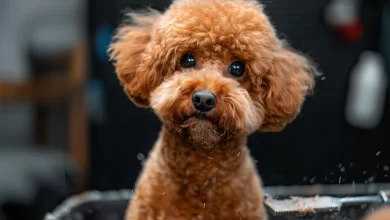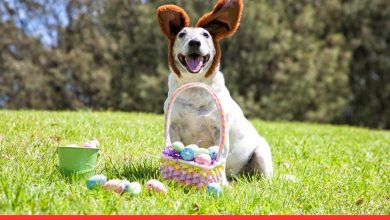Hybrid Dog Breeds: Purposefully Bred for Specialized Tasks


Hybrid dog breeds, also known as designer dogs, are becoming increasingly popular among dog lovers.
These dogs are bred by crossing two different purebred dogs to create a new breed with specific traits.
Hybrid dog breeds are often bred for tasks such as service work, search and rescue, hunting, herding, and therapy visits.
In this article, we will explore different hybrid dog breeds for tasks and how to train them to maximize their potential.
Different Hybrid Dog Breeds for Tasks
Hybrid dog breeds are bred for specific tasks, and each breed has unique characteristics that make them well-suited for their intended purpose.
Here are some examples of hybrid dog breeds for different tasks:
Working Dogs
Working dogs are bred to perform a variety of tasks, from guarding people, property, and livestock to pulling carts or sleds.
They are strong, smart, and fearless, and can be fun-loving or serious. Some examples of hybrid working dogs include:
Labradoodle-Golden Retriever for service work
This hybrid combines the intelligence and service-oriented nature of the Labradoodle with the friendly and obedient characteristics of the Golden Retriever.
Well-suited for service tasks, they excel in aiding individuals with disabilities or providing support in various service roles.
German Shepherd-Malinois for search and rescue
Merging the agility of the German Shepherd with the keen sense of smell and determination of the Malinois creates an excellent search and rescue hybrid.
These dogs are adept at navigating challenging terrains and locating missing persons.
Doberman Pinschers for therapy dogs
Known for their loyalty and intelligence, Doberman Pinschers can be crossbred to create therapy dogs.
These hybrids bring a calm and reassuring presence, making them well-suited for comforting and assisting individuals in therapeutic settings.

Sporting Dogs
Sporting dogs were bred to aid hunters in locating, retrieving, and flushing games.
They can track, chase, freeze, and return with the prize.
Some examples of hybrid sporting dogs include:
Goldendoodle-Pointer for retrieving
The combination of the Goldendoodle and Pointer results in a hybrid with a keen sense of smell and exceptional retrieving abilities.
These dogs are ideal for assisting hunters by locating and retrieving game with precision.
Weimaraner-Vizsla for hunting
This hybrid fuses the hunting prowess of the Weimaraner with the energy and agility of the Vizsla.
The result is a skilled hunting companion with a remarkable ability to track, chase, and retrieve game.
Labradoodle for waterfowl hunting
Labradoodles, a mix of Labrador Retriever and Poodle, excel in waterfowl hunting due to their strong swimming abilities and retrieving instincts.
Their adaptable and intelligent nature makes them valuable assets during hunting expeditions.
Herding Dogs
Herding dogs are trained to help control livestock. They are intelligent, agile, and have a strong work ethic.
Some examples of hybrid herding dogs include:
Border Collie-Australian Shepherd for herding livestock
This hybrid combines the intelligence and agility of the Border Collie with the herding instincts of the Australian Shepherd.
The result is a capable herding dog that excels in controlling and managing livestock with precision.
Australian Shepherd-Kelpie for agility
Merging the Australian Shepherd with the Kelpie creates an agile and intelligent hybrid.
Well-suited for agility tasks, they can navigate obstacles with speed and precision, making them valuable in competitive settings.
Border Collie-Blue Heeler for herding and agility
The combination of the Border Collie and Blue Heeler results in a hybrid with exceptional herding and agility capabilities.
Their intelligence and energy make them effective in both herding tasks and agility competitions.
Companion/Therapy Dogs
Companion/therapy dogs are bred for their friendly and affectionate nature.
They are often used for emotional support and therapy visits.
Some examples of hybrid companion/therapy dogs include:
Goldendoodle-Poodle for emotional support
The Goldendoodle-Poodle hybrid is bred for its friendly nature and hypoallergenic qualities, making it an excellent choice for emotional support.
These dogs provide comfort and companionship to individuals in need of emotional assistance.
Cavalier King Charles Spaniel-Pug for therapy visits
This delightful hybrid, combining the affectionate Cavalier King Charles Spaniel with the charming Pug, makes an excellent therapy dog.
Their friendly demeanor and gentle disposition make them well-received during therapy visits.
Cockapoo for companionship
The Cockapoo, a mix of Cocker Spaniel and Poodle, is bred for companionship.
Known for their friendly and outgoing nature, these hybrids make excellent family pets, providing companionship and joy to those around them.

Finding the Right Fit
When deciding on a hybrid dog breed tailored for a specific task, careful consideration of the dog’s temperament, energy level, and physical traits is essential.
Ensuring that the chosen breed aligns seamlessly with the intended task is paramount; after all, a dog bred for one purpose may not be the optimal choice for another.
Temperament
Each hybrid dog breed possesses a distinct temperament.
Some breeds are known for their sociability and friendliness, making them ideal for therapy or companion roles.
Others may exhibit traits such as alertness and independence, which are well-suited for tasks like hunting or guarding.
Evaluating the dog’s temperament ensures compatibility with the desired task and aligns with the owner’s preferences.
Energy level
Energy levels vary among hybrid dog breeds, influencing their suitability for specific tasks.
Dogs with high energy levels may excel in activities like herding, hunting, or agility competitions, where endurance and vitality are crucial.
On the contrary, breeds with lower energy levels may be better suited for tasks that require a calm and steady demeanor, such as therapy or companionship.
Physical characteristics
The physical attributes of a hybrid dog breed play a pivotal role in determining its suitability for a particular task.
Consideration should be given to factors like size, coat type, and specific features relevant to the task at hand.
For instance, a water-resistant coat may be advantageous for a dog involved in waterfowl hunting, while a herding dog may benefit from agility and speed.
Task compatibility
It’s essential to choose a hybrid breed that aligns with the intended task.
A dog specifically bred for hunting may possess instincts and characteristics unsuitable for roles like therapy or companionship.
Assessing the breed’s natural inclinations and aptitudes ensures a harmonious fit with the designated task, enhancing the chances of success and satisfaction for both the dog and its owner.
How to Train Hybrid Dogs for Maximizing Potential

Training hybrid dogs for specific tasks requires patience, consistency, and positive reinforcement. Here are some tips for training hybrid dogs:
Start early
Begin training your hybrid dog early on to instill good habits and behaviors.
Early training establishes a foundation that sets the stage for a well-behaved and responsive canine companion.
Puppies, in particular, are like sponges, absorbing information quickly, making it an ideal time to commence training.
Be consistent
Consistency is the cornerstone of effective training for hybrid dogs.
Use the same commands and techniques consistently to reinforce desired behaviors.
This predictability helps the dog understand expectations, making the learning process smoother and more effective.
Use positive reinforcement
Positive reinforcement is a powerful tool in training hybrid dogs.
Reward good behavior with treats, praise, and affection.
This creates a positive association with desired actions, motivating the dog to repeat them.
Avoid punitive measures or negative reinforcement, as these can induce fear and anxiety, hindering the learning process.
Socialize your dog
Socialization is crucial for hybrid dogs to develop good behavior around other dogs and people.
Expose your dog to various environments, sounds, and interactions to foster confidence and adaptability.
Well-socialized dogs tend to be more relaxed and amicable in diverse situations.
Be patient
Patience is a virtue when training hybrid dogs.
Recognize that training takes time, and results may not be immediate.
Consistent, positive reinforcement builds trust and strengthens the bond between you and your dog.
Celebrate small victories and be prepared to invest time and effort in a well-behaved companion.
Customize training to the breed
Recognize the unique characteristics and instincts of your hybrid dog’s breed mix.
Tailor the training approach to accommodate these traits.
For example, herding breeds may benefit from agility training, while hunting breeds may excel in scent-related activities.
Seek professional guidance
If needed, consider seeking professional guidance from a certified dog trainer.
A professional can provide personalized insights and techniques to address specific challenges and enhance the training experience.

Conclusion
Hybrid dog breeds are bred for specific tasks, and each breed has unique characteristics that make them well-suited for their intended purpose.
When choosing a hybrid dog breed for a specific task, it’s important to consider the dog’s temperament, energy level, and physical characteristics.
Training hybrid dogs for specific tasks requires patience, consistency, and positive reinforcement.
By following these tips, individuals can maximize the potential of their hybrid dogs and ensure they are well-suited for their intended purpose.
FAQs
A hybrid dog breed, also known as a designer dog, is a crossbreed between two different purebred dogs to create a new breed with specific traits.
Absolutely! While certain breeds have natural predispositions, any dog can be trained, with individual personality and proper training playing a crucial role.
Do your research! Consider your lifestyle, experience, and activity level. Match the dog’s energy and training needs to yours. Choose responsible breeders or adoption organizations, prioritizing health and temperament over specific physical traits.



